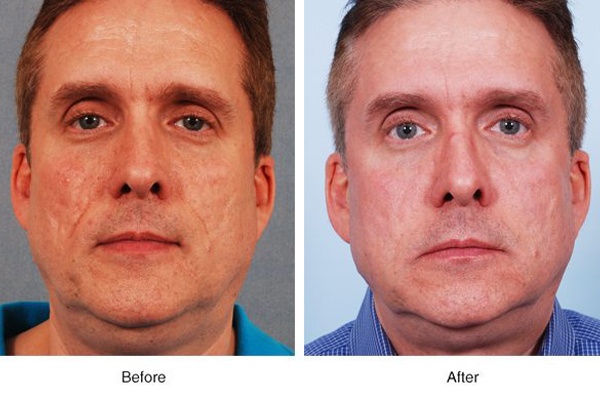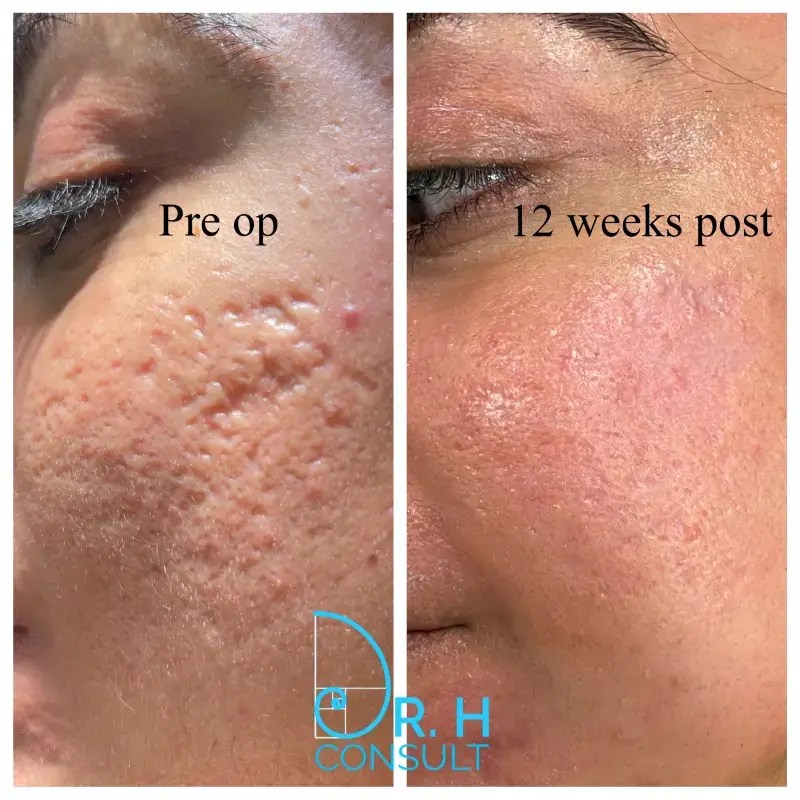Best Acne Scars Treatment: Advanced Techniques for Easier Skin
Best Acne Scars Treatment: Advanced Techniques for Easier Skin
Blog Article
Recognizing the Different Skin Problem and Reliable Therapy Options for Acne Marks
Acne marks represent a complex interplay of skin problems that dramatically impact people' self-esteem and overall skin health. As we check out the landscape of acne scar administration, it comes to be obvious that the trip toward clearer skin might involve even more than just topical remedies.
Sorts Of Acne Marks

In comparison, hypertrophic scars result from an overflow of collagen during the recovery procedure, causing increased locations on the skin. These scars are commonly firm and can vary in color, often showing up red or darker than the bordering skin.
Understanding these kinds of acne marks is vital for establishing an effective therapy strategy - acne and acne scars treatment. Choices might consist of chemical peels, laser treatment, microneedling, or dermal fillers, customized to the particular scar kind. A detailed examination with a dermatologist can assist determine one of the most suitable intervention, taking into consideration the person's skin type, scar severity, and total skin health
Root Causes Of Acne Scarring
Marking takes place as a result of the body's all-natural healing response to swelling and injury brought on by acne sores. When acne forms, it activates an inflammatory reaction, bring about the release of various cytokines and development elements that advertise recovery. This procedure can sometimes lead to too much cells formation or poor repair, resulting in scars.
The key root causes of acne scarring include the intensity of the acne itself, period of the sores, and specific skin kinds. Severe inflammatory acne, such as nodules and cysts, is most likely to result in scarring as a result of much deeper tissue damages. Furthermore, incorrect handling of acne sores, such as selecting or pressing, can aggravate tissue injury and inflammation, boosting the chance of scarring.
Genetic predisposition also plays a substantial duty; people with a household background of scarring are at a greater risk. Skin type and color can influence scar formation, as darker skin tones may experience post-inflammatory hyperpigmentation, while lighter skin might develop atrophic scars.
Ultimately, understanding these causes is vital in managing acne and alleviating the potential for scarring.

Treatment Choices for Scarring
Effective therapy choices for acne scarring vary relying on the kind and intensity of the marks. Generally categorized into atrophic, hypertrophic, and keloid scars, these problems require tailored strategies for ideal results.
For atrophic scars, which are identified by a loss of cells, treatments such as chemical peels, microdermabrasion, and laser therapy are frequently utilized. These methods promote skin revival and boost collagen production, therefore enhancing skin structure. Subcision, a minimally invasive procedure, can likewise be efficient by breaking up fibrous bands under the skin.
Hypertrophic and keloid scars can be a lot more challenging to treat. Options include corticosteroid injections to minimize swelling and flatten the scars. In some cases, cryotherapy or laser treatment might be suggested to decrease their appearance.
Surgical options are available for severe scarring, where excision or skin grafting might be needed. It's important for individuals to seek advice from with a dermatologist to evaluate their details mark type and review one of the most ideal therapy plan. Incorporating numerous therapies commonly yields the ideal outcomes, making sure that each client's unique skin condition is attended to efficiently.
Natural Home Remedy and Natural Solutions
Natural services and natural remedy can offer an easily accessible method for individuals looking for to improve the look of acne scars (skin rejuvenation visit this site treatments). Different components located in the home kitchen area have actually shown prospective benefits in enhancing skin texture and promoting recovery

One more efficient alternative is lemon juice, which works as an all-natural exfoliant and can lighten hyperpigmentation. However, it ought to be used very carefully, as it may trigger photosensitivity. Oatmeal masks are also useful; their gentle peeling can help get rid of dead skin cells while soothing irritability.
Vital oils, such as tea tree oil and lavender oil, can further sustain scar recovery because of their antimicrobial properties. It is vital to carry out a spot test prior to using any type of solution to ensure there are no damaging reactions. These natural options can be a complementary approach in the trip to decrease acne scars.
Preventing Future Scarring
Taking on a positive method to skincare can significantly decrease the risk of establishing future acne marks. Routine cleaning, exfoliation, and hydration can aid preserve skin wellness and avoid clogged up pores.
In addition, preventing the temptation to select or press acne lesions is important, as this can lead to inflammation and subsequent scarring. Rather, people should focus on using topical therapies that advertise recovery and decrease swelling. Ingredients such as salicylic acid, benzoyl peroxide, and retinoids are recognized for their effectiveness in handling acne and lessening scars.
Sun security is an additional essential element; exposure go now to UV rays can dim marks and impede recovery. Using a broad-spectrum sunscreen daily can minimize these results.
Lastly, maintaining a healthy and balanced diet regimen rich in anti-oxidants and staying hydrated assistances skin regeneration. By carrying out these preventative measures, individuals can considerably lower their threat of future scarring and promote general skin health.
Verdict
Finally, a detailed understanding of acne marks, including both atrophic and hypertrophic types, is necessary for efficient therapy methods. Tailored interventions, including expert treatments and natural home remedy, can substantially improve skin appearance and appearance. Preventive steps likewise play a crucial function in lessening future scarring. Examination with a skin specialist remains imperative to create personalized techniques that consider private skin kinds and mark extent, inevitably enhancing the efficacy of mark management strategies.
Acne scars represent a complex interaction of skin problems that dramatically effect individuals' self-confidence and total skin wellness. The two key categories of acne marks are atrophic and hypertrophic marks. These marks are further identified into 3 subtypes: ice choice marks, which are deep and slim; boxcar marks, which are broader and have well-defined sides; and rolling marks, which create a wave-like look due to unequal skin structure.
A complete examination with a dermatologist can help identify the most appropriate intervention, taking into account the individual's skin type, scar extent, and total skin health.
Assessment with a skin doctor why not try this out remains critical to develop tailored methods that consider individual skin kinds and mark intensity, inevitably improving the efficacy of scar management techniques.
Report this page